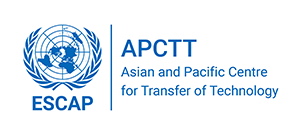Novel Chemical-free Wood Modification Process
Our partner, a Hungarian SME has been a trader of outdoor furniture and decking for more than 10 years. In the course of this activity they have also developed a unique wood modification technology. They are interested in a license agreement. Background information: As regards applicability, impregnated wood has its limitations. Customers started to require higher standards; families with little children worried over the chemicals inside the wood starting to appear on the wood’s surface in time; furthermore, park and playground builders experienced the problem of the impregnation technique failing to penetrate the entire cross-section of outdoor wooden structures, some parts of it thereby not getting adequate protection. Innovation of the technology: The newly developed modification technology is a unique environment friendly treatment meeting all requirements regarding modified timber. The finished product is free of toxins and hazardous waste materials are generated during or after the treatment. Besides giving complete protection to the wood, it also improves its appearance, by accentuating its grains, i.e. the natural beauty of the material. The technology was a great success at the Construma exhibition in Budapest in April 2009. (This is the largest and most recognised annual fair for the construction industry in Hungary). This new and unique technology made a powerful and encouraging entry to the targeted professional market segments and was received with success by the public as well. In recognition of this, the invention received Construma 2009’s Novelty Award. How it works: The modification technology is based on the combined application of two essential processes. The wood is partly modified by the known process of thermal treatment, i.e. by the variation of the surrounding temperature. Contrary to conventional thermal treatment methods, the new technology also applies a catalyst, changing the structure of the cellulose in the wood in the entire cross section, making it more stable and therefore more resistant. Opposed to other procedures, this technology closes the wood cells instead of opening them up, resulting in a significant decrease of the water intake of the modified wood. This is where the fundamental difference between conventional modification methods and the one described herein lies, as this new process modifies the cellular structure of the wood both physically and chemically. The catalysts, whose presence is inevitable for the complex modification process, do not enter the wood, leaving the modified wood without any content of foreign chemicals, opening up a virtually unlimited scope of application. The catalysts used are harmless to humans and animals. Its closed circuit application meets the strict contemporary environmental requirements. The technology can be equally incorporated into wood drying or thermal treatment procedures regardless of the species of wood used.
Sector: Construction
Country: Hungary
Area of Application: Woodworking industry, Furniture factories, Facades and outdoor cladding, Parquetry and flooring, Cladding, Decking, Sauna, Bathroom flooring, cladding and furnishing, Health, wellness and wet areas, Joinery, Musical instruments, Sports equipment, Roofing applications, Outdoor furniture, fences, Doors and windows, Staircases, Heating-grille, Swimming pool-grille, Children’s toys, playground equipment, Barrels, Suitable for under floor heating.
Keywords: wood treatment, chemical-free, modification
Advantages: Main advantages:Cost efficiency, Dimensional stability, Durability, Fungus and insect resistance, Natural beauty, Chemical free end product, Non-toxic and environment friendly technology. Economical advantages: The technology is applicable to fresh-sawn timber thereby allowing the avoidance of the usual preservative chemical treatments against fungi and insects. Such chemical treatments only improve the durability, while this technology offers further advantages: The rotation of the raw material is exceptionally fast (16-24 hours). Therefore the liquid asset financing requirements of this technology are more favourable than others. Construction and operation of the equipment is simple, without the need for vacuum or pressurized chambers. The investment of the complete equipment and technology returns in about 3-5 years depending on the size and capacity. The life span of the equipment is around 20 years, provided maintenance according to specifications is carried out throughout. The cost of treatment per cubic meter of timber is lower than the figure applicable to other thermal wood treatment technologies. The treatment formulae corresponding to the various each wood species are simple and easily learnt. The treated material can be processed immediately after removal from the treatment chamber. Regular technological follow-up service as well as assistance at setting up treatment schedules are provided.
Environmental aspects:
Development Status: Fully Commercialized
Legal Protection: Patent
Technical specifications:
Transfer Terms: Technology Licensing
Target Countries: World Wide
Estimated cost (US$):
Upload any relevant document:
Contact Person: Laser Consult Ltd (Hungary)
Address: H-6701 PO Box 1191.
City: Szeged
Country: Hungary
Zip/Pin Code:

